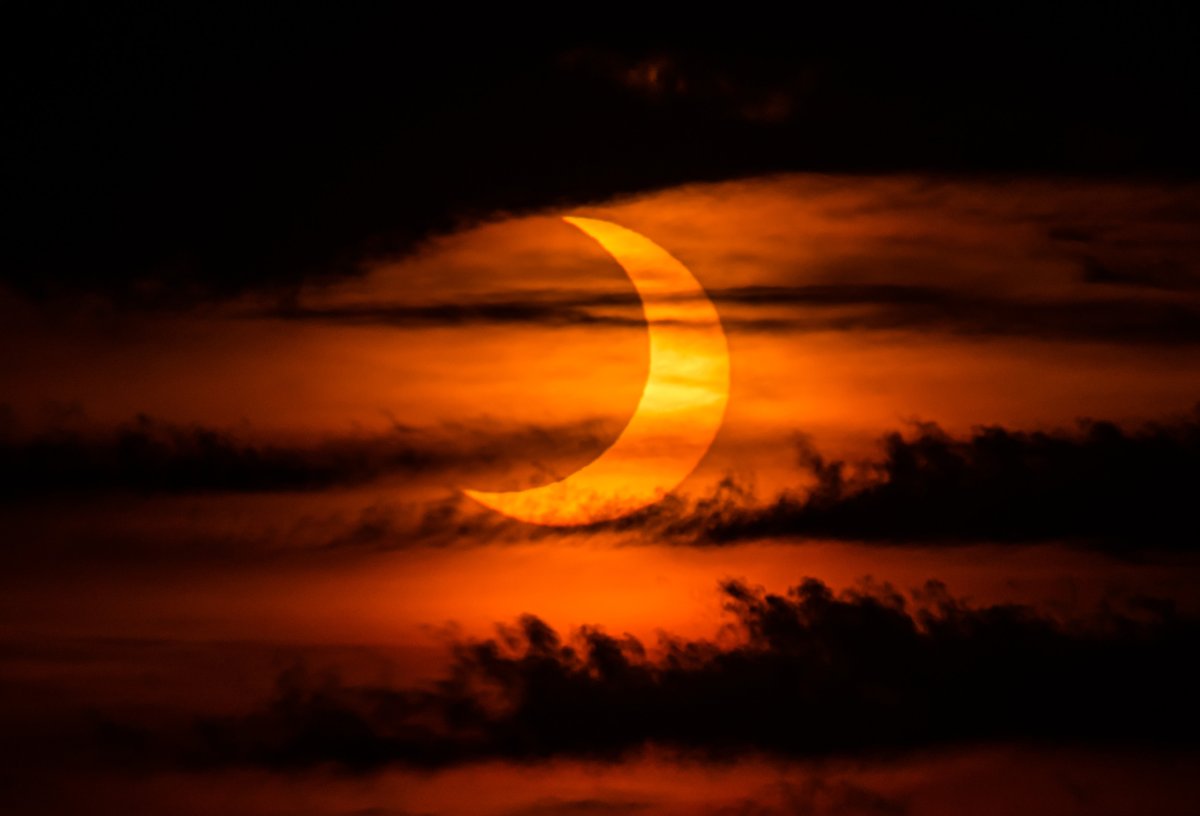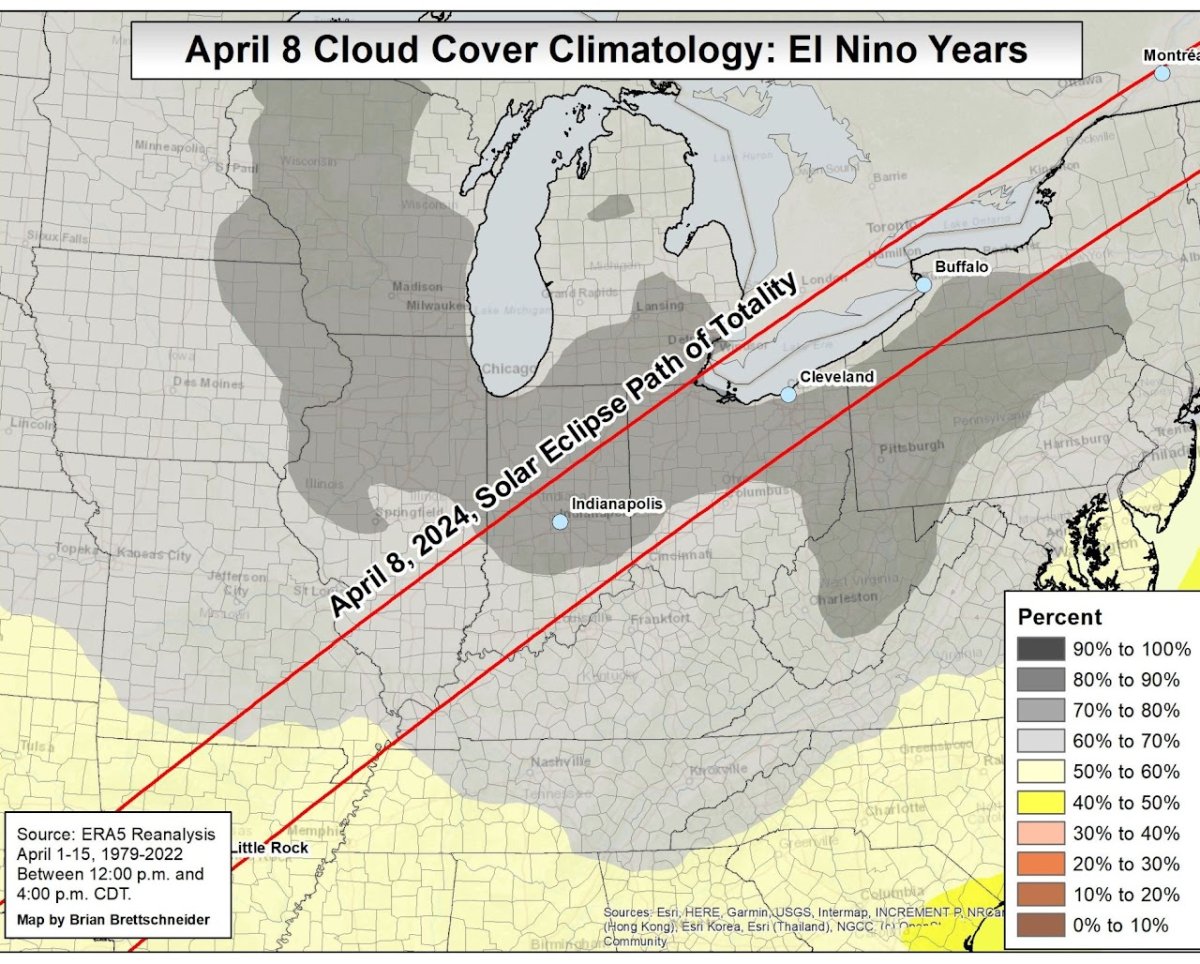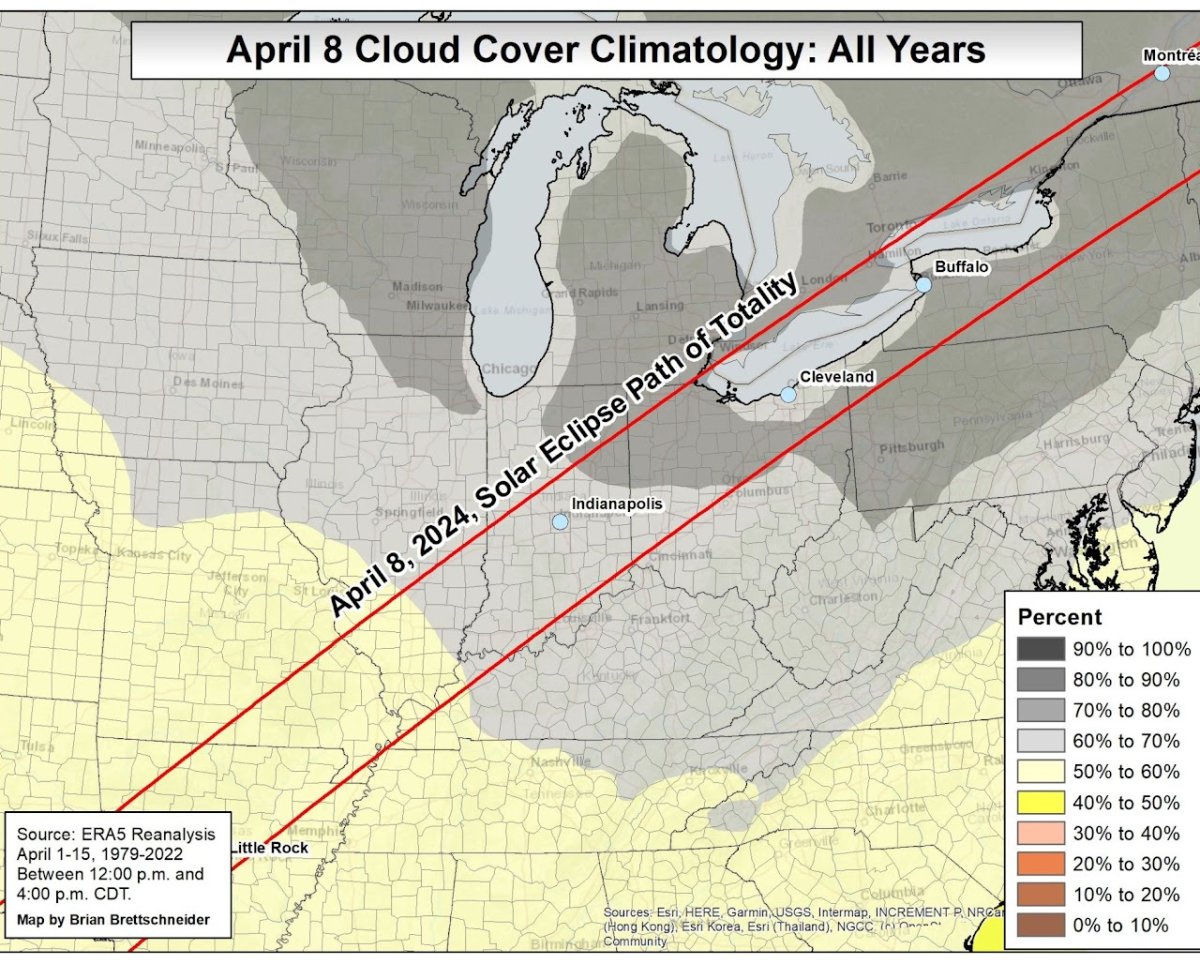Solar eclipse viewers may want to find a viewing spot in the southern portion of the path of totality, as meteorologists suggest clouds will obscure the celestial event in the north.
According to a long-range forecast by the National Weather Service (NWS), parts of Ohio, Pennsylvania and New York near the Great Lakes are the most likely to experience cloud cover during the solar eclipse.
However, depending on whether an El Niño pattern—a plume of unusually warm water in the sea that occurs periodically—is still influencing weather patterns, how far that cloud cover spreads could vary.
On April 8, the total solar eclipse—when the sun is completely blocked by the moon—will be visible for different lengths of time along a path from northern Mexico, across the Midwest and up into New England. The path of totality—the area in which it will be seen—reaches across 13 states, as well as small areas of Tennessee and Michigan.

As with the previous such event in the U.S., in 2017, many people are expected to travel to ideal viewing spots, which has raised concerns about stretched public safety resources.
The Federal Highway Administration says that while around 32 million people live in the path of the total eclipse, between 1 million and 5 million are expected to travel to prime viewing locations to see it.
El Niño conditions are anticipated to potentially still be present early in the Spring, in which case the NWS predicts there is an 80-90 percent chance of cloud coverage along the path of totality in central Indiana, Ohio and southern New York.

Under this scenario, there is also a 60-70 percent chance of cloud coverage in southern Indiana and Illinois, southwestern Missouri and northern New York.
If climate conditions are not affected by the El Niño pattern, cloud coverage is expected to be focused around the Great Lakes region, while a 60-70 percent chance only extends to south central Illinois. Elsewhere, there is a 50-60 percent chance of cloud cover.
The NWS notes that the long-range forecast is based on previous weather trends, and the forecasts are likely to change as April 8, the day of the eclipse, approaches.

"A lot of this is based on climatology what we have seen in years past, and we all know April across the Great Lakes and the Northeast usually coincides with rain," Britta Merwin, a Fox Weather meteorologist, said on Tuesday.
Fox Weather is itself predicting cloud coverage highly likely across the Great Lakes stretch of the path of totality, and unlikely across Arkansas and Texas.
With heavy traffic expected to be a problem in many places, experts are stressing that motorists should plan to allow for extra time to reach their desired viewing spot to avoid being distracted on the road.
As well as roads anticipated to become heavily congested after the eclipse has ended, the Federal Highway Administration has warned that cloud cover could create localized areas of traffic as visitors move to locations with better visibility.
Uncommon Knowledge
Newsweek is committed to challenging conventional wisdom and finding connections in the search for common ground.
Newsweek is committed to challenging conventional wisdom and finding connections in the search for common ground.
About the writer
Aleks Phillips is a Newsweek U.S. News Reporter based in London. His focus is on U.S. politics and the environment. ... Read more
To read how Newsweek uses AI as a newsroom tool, Click here.






